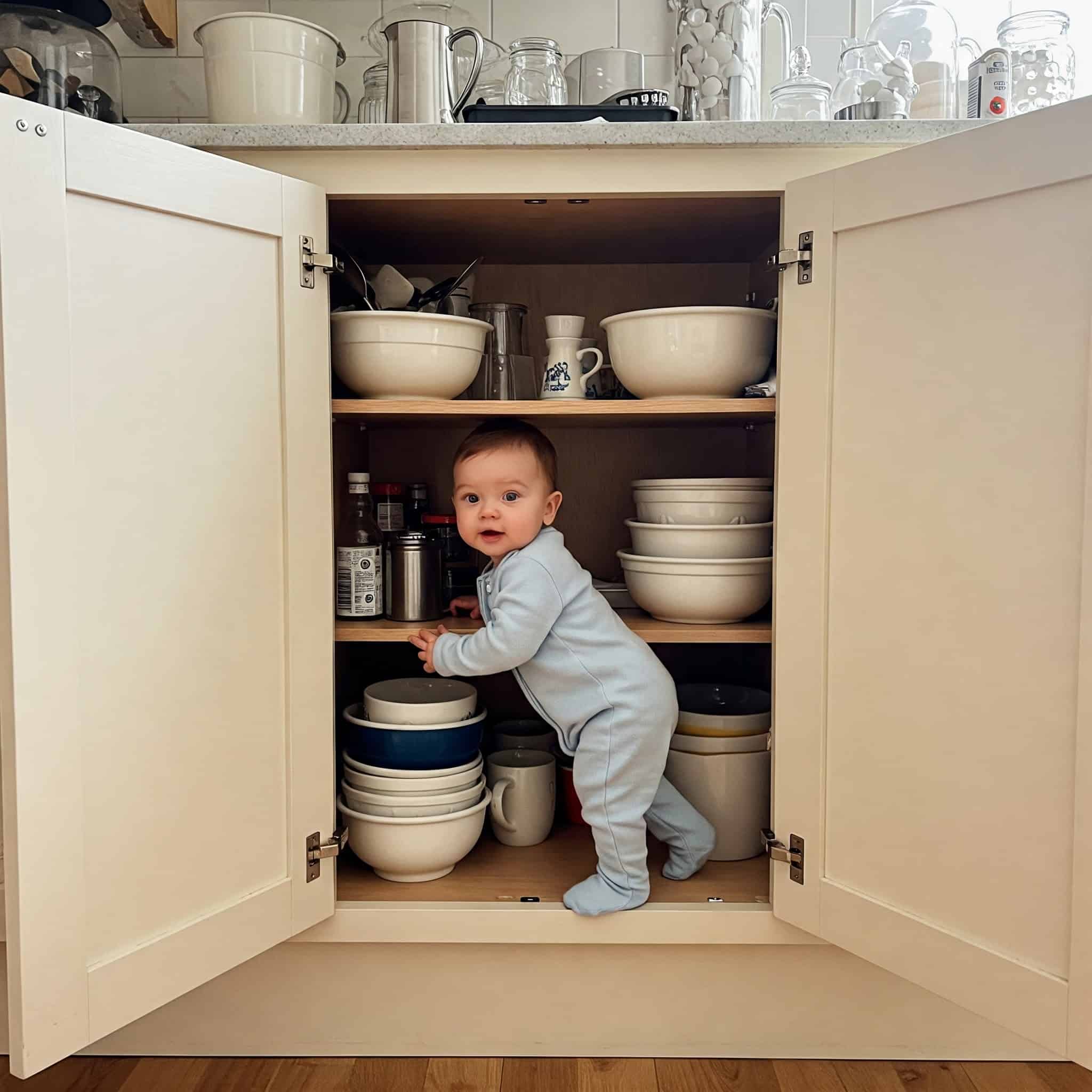
Question: How to Keep My Baby Out of the Kitchen Cabinets?
Answer: To keep your baby out of kitchen cabinets use childproof cabinet locks and latches. Remove tempting items from lower cabinets and redirect your baby’s attention elsewhere.
Baby-Proofing Your Kitchen: A Guide to Cabinet Safety
Curious babies love to explore. Kitchen cabinets, filled with intriguing items, often become prime targets. This guide offers practical solutions to secure your cabinets and create a safe kitchen environment for your little one. Learn simple yet effective methods to prevent access, establish boundaries, and encourage exploration in safer areas.
Effective Cabinet Locks and Latches
Childproof locks prevent little hands from opening cabinets. Various types suit different cabinet styles and needs.
Magnetic Locks:
These locks install inside cabinets, remaining invisible. A magnetic key unlocks them from the outside. They work well for most cabinet types.Adhesive Latches:
Easy to install, adhesive latches stick to the outside of cabinets. They are simple to use but may not be as strong as other options.Spring-Loaded Latches:
These latches require adults to squeeze them together to open. They offer good security and work well for cabinets with knobs or handles.
Consider your cabinet style and your child’s dexterity when choosing locks. Test locks regularly to ensure they remain secure.
Click here for more information on a kitchen cabinet refinishing service
Related Article: How to Childproof Kitchen Drawers?
Related Article: How to Baby Proof Cabinets Without Ruining Them?
Consistent Supervision and Redirection
While locks and diversions help, consistent supervision remains essential. Active monitoring prevents accidents and teaches your baby about kitchen boundaries.
Close Supervision:
Stay attentive when your baby is in the kitchen. Watch their movements and anticipate potential hazards.Verbal Cues:
Use clear and simple language to redirect your baby away from cabinets. “No, cabinets are not for babies,” communicates the rule.Positive Reinforcement:
Praise your baby when they play in their designated area or avoid the cabinets. Positive feedback encourages good behaviour.
Consistent supervision and clear communication establish expectations and create a safe kitchen environment.
Removing Temptations from Low Cabinets
Lower cabinets pose the biggest temptation. Remove hazardous items to prevent accidents, even with locks in place.
Cleaning Supplies:
Relocate cleaning products to higher cabinets or a locked pantry. These chemicals pose serious risks to children.Sharp Objects:
Store knives, scissors, and other sharp utensils out of reach. Consider a locked drawer or a magnetic knife strip on the wall.Heavy Items:
Remove heavy pots, pans, and appliances from low cabinets. These could fall and injure a child.
Regularly check lower cabinets for new hazards as your baby becomes more mobile.
Securing Appliances and Drawers
Cabinets aren’t the only kitchen hazard. Secure appliances and drawers to prevent accidents.
Oven Lock:
An oven lock prevents children from opening a hot oven door.Refrigerator Lock:
This lock prevents children from accessing food and potentially dangerous items inside the refrigerator.Dishwasher Lock:
Secure the dishwasher to prevent access to sharp utensils and cleaning agents.Drawer Locks:
Install locks on drawers containing sharp objects or hazardous materials.
Consider installing appliance locks and drawer locks for added safety.
Regularly Assessing and Updating Your Strategy
Babies grow and develop quickly. Regularly reassess your kitchen safety measures and adjust as needed. What worked for a crawling baby may not be sufficient for a toddler.
Check Locks Regularly:
Ensure locks remain functional and securely attached.Monitor New Hazards:
As your baby explores, identify and address new potential dangers.Adapt to Developmental Stages:
Adjust your strategies as your baby’s abilities and curiosity change.
Regular assessment ensures ongoing safety in your evolving kitchen environment.
Conclusion
Baby-proofing your kitchen cabinets involves a multi-faceted approach. Using appropriate locks and latches creates physical barriers. Designing a diversionary play space redirects your baby’s curiosity. Consistent supervision and clear communication reinforce boundaries. Removing temptations and securing appliances add extra layers of protection. Regularly reviewing and updating your strategy ensures its effectiveness as your child grows and develops. By implementing these methods, you can create a safer kitchen environment for your little explorer, fostering both their curiosity and well-being.

Blue Malue Get in touch with Blue here.
